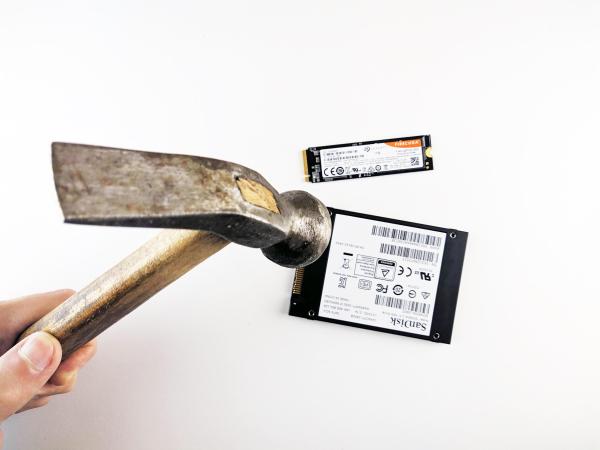Data Shredding vs. Recycling: What's the Difference and Why Does it Matter?
In today's world, data is one of the most valuable assets a business can possess. However, with the rise of cyber threats and data breaches, it has become increasingly important for companies to properly dispose of their old data. This brings us to the two most common methods of data disposal: shredding and recycling. In this article, we will explore the differences between data shredding and recycling, and why it matters for your business.
What is Data Shredding?
Data shredding, also known as secure data destruction, is the process of completely destroying data from any electronic device such as computers, laptops, hard drives, and servers. This process makes sure that the data is irrecoverable and cannot be retrieved by anyone. There are two types of data shredding: physical and digital.
Physical Data Shredding
Physical data shredding is the process of physically destroying the hard drive or other electronic device that contains sensitive data. This is done by using specialized equipment to dismantle the device, crush it, and shred it into small pieces. This process ensures that the data is permanently destroyed, and the physical device is rendered unusable.
Digital Data Shredding
Digital data shredding is the process of using software to overwrite data on a hard drive or other electronic device with random characters. This process ensures that the data is irretrievable and the device can be reused or recycled.
What is Data Recycling?
Data recycling is the process of reusing or repurposing electronic devices such as computers, laptops, hard drives, and servers. This process aims to reduce electronic waste and promote sustainability. The data on these devices can be either destroyed or wiped clean before the device is refurbished or reused.
The Differences Between Data Shredding and Recycling
The main difference between data shredding and recycling is the end result. Data shredding completely destroys the data and the electronic device, while recycling aims to repurpose or reuse the device after removing the data. Another difference is the level of security each method offers. Data shredding provides the highest level of security as it ensures that the data is irretrievable, while data recycling still poses a risk of data being recovered if not done properly.
Why Does it Matter?
Data breaches and cyber threats are becoming more common every day. A single data breach can cost a business millions of dollars in fines, lawsuits, and reputation damage. Properly disposing of old data can help mitigate the risk of a data breach and protect your business's sensitive information. It is important to choose the right method for your business based on your security needs and sustainability goals.
How to Choose the Right Method for Your Business?
Choosing the right method for your business depends on several factors such as the level of security you need, your sustainability goals, and your budget. If your business deals with highly sensitive information such as financial or medical data, data shredding is the recommended method. If you're looking to promote sustainability, data recycling is the way to go. It is important to choose a reputable and certified data destruction or recycling company to ensure the proper disposal of your data.
Conclusion
Properly disposing of old data is crucial in today's business world. Data shredding and recycling are two common methods for data disposal. Data shredding provides the highest level of security by completely destroying the data and the device, while data recycling aims to repurpose or reuse the device after removing the data. Choosing the right method for your business depends on several factors such as the level of security you need, your sustainability goals, and your budget. It is important to choose a reputable and certified data destruction or recycling company to ensure the proper disposal of your data.
FAQs
- What is the cost difference between data shredding and recycling?
The cost difference between data shredding and recycling depends on several factors such as the type of device, the volume of data, and the level of security required. Generally, data shredding is more expensive than data recycling due to the specialized equipment and processes involved.
- How often should a business dispose of their old data?
It is recommended that businesses dispose of their old data on a regular basis, especially if the data contains sensitive information. The frequency of data disposal depends on the business's specific needs and industry regulations.
- What happens to the data after it is shredded or recycled?
After the data is shredded or recycled, the electronic device may be physically destroyed or wiped clean of any data. The device may then be repurposed or recycled depending on the method used.
- Can data be recovered after it has been shredded or recycled?
Data cannot be recovered after it has been properly shredded or recycled. However, if the data is not properly disposed of, it may still be recoverable.
- What certifications should I look for in a data destruction or recycling company?
It is important to choose a data destruction or recycling company that is certified by reputable organizations such as the National Association for Information Destruction (NAID) or the Responsible Recycling (R2) certification. These certifications ensure that the company adheres to strict standards for data security and sustainability.

